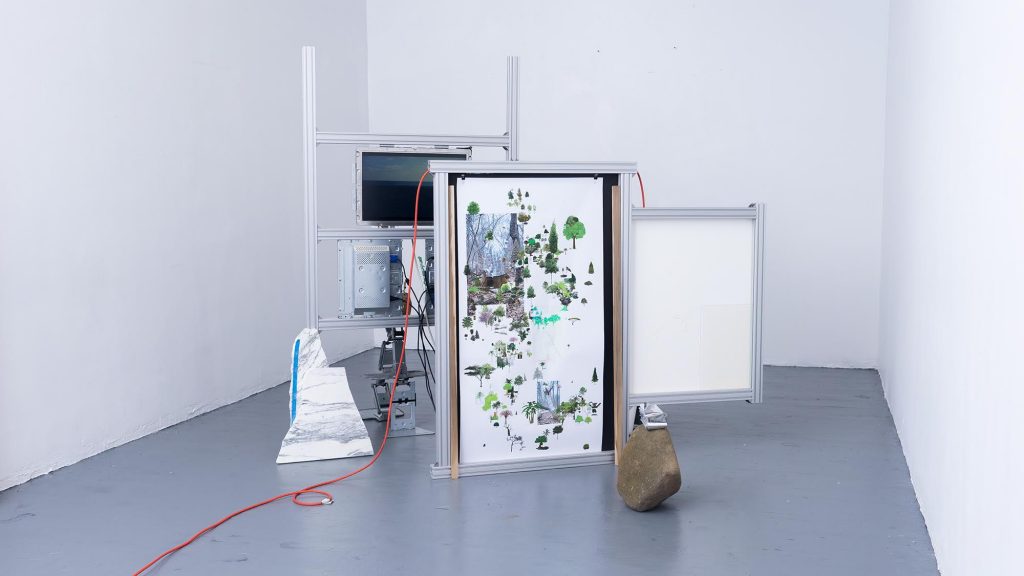Political structures such as gender, cultural appropriation, and bipartisan government pressure individuals to maneuver pre-e xisting systems. In the film Yojimbo(1961) Akira Kurosawa takes on this idea of bilateral paradigms and how an individual can affect these structures. “Let me go, Father” is the opening line from Yojimbo revealing a son’s desire to escape his small town’s struggle between two rival gangs. When a disillusioned and unemployed samurai named Sanjuro enters the town, he opportunistically offers his service as a fighter to both sides. Acting as a catalyst with no incentive of success for either party, Sanjuro upsets a perilous dynamic by exposing each gang’s lust for power and fortune. After decimating both the gangs and their resources used to monopolize the town, Sanjuro is left once again with no means or purpose and leaves with nothing but his experience.
In AJ Springer’s interpretation of Yojombo, the structures mimic the cinematography that begins the film strictly in vertical and horizontal eye level angles. Once the dynamic in the plot starts shifting, so do the camera positions that portray the scenes. This subtle and subliminal shift of perception is echoed by the installation, which creates a two-sided environment conflicting with both outside elements and the path of the viewer. By placing the observer inside of the work, Springer challenges the participant to recognize and question their part in this dichotomous system (from gallerymc.org).
As Sanjuro uses his authority to manipulate both gangs, he highlights the division and tension within the town. In reference to this idea, Ryota Sato equates Sanjuro to a glass case dividing the audience and the artwork in a museum. An institution has the power to decide who the audience is and what defines art. By questioning and complicating the existing system of anthropocene, his works challenges the viewer to consider the process of systems creating political divisions.
Through drawing and painting Weston Frazor is interested in how perception and depictions of perspective can affect the viewer. In the film, Sanjuro maneuvers his way through a town void of moral. Similarly, Frazor’s work invites the viewer to navigate skewed perspectives, lost horizons, and unsightly material representation. Here, things are off but nothing receives preference leaving only the experience of viewing. By illuminating a lack of hierarchy, his works shifts our focus to the importance of perception.
Let me go, father
Featuring Weston Frazor and Ryota Sato
February 17-27, 2017
Opening reception: February 17, 6-9 pm
Closing reception: February 25, 6-9pm
Gallery MC
Open Monday and Tuesday by Appointment; Wed to Friday 12 to 6pm; Saturday 1 to 6pm
549 West 52nd Street, 8th Floor (Between 10th and 11th Avenue)
(Ryota Sato)

